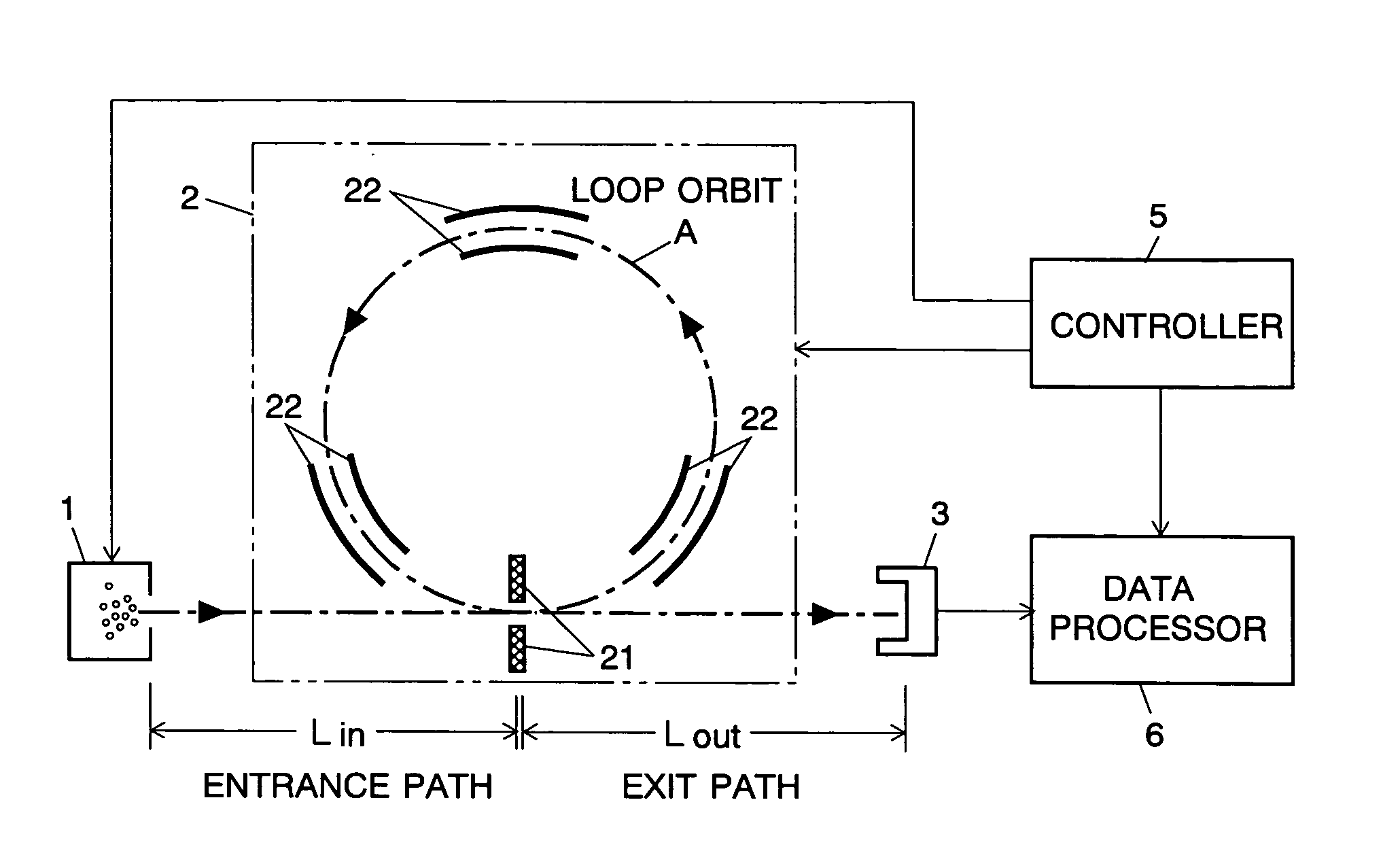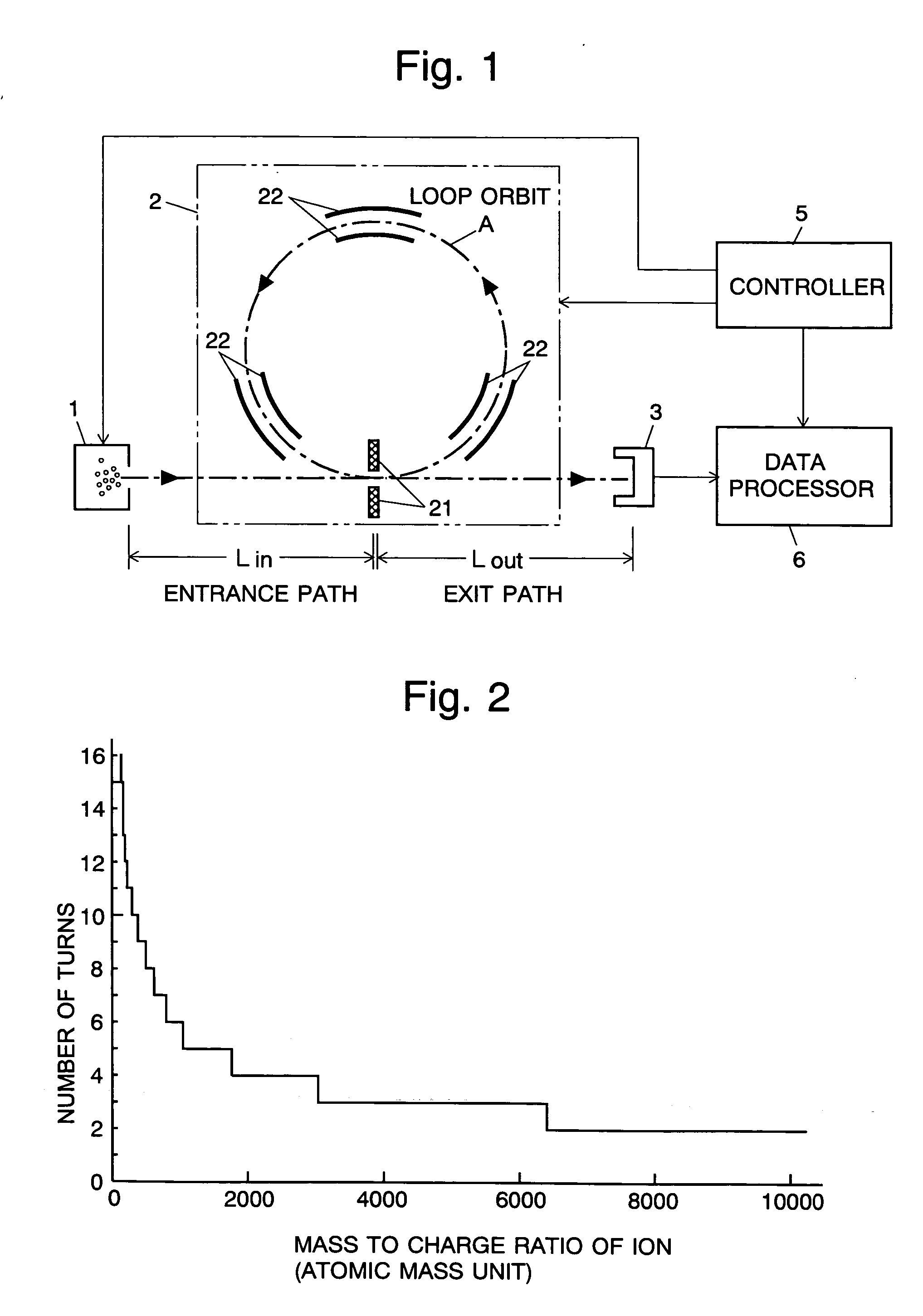Method of determining mass-to-charge ratio of ions and mass spectrometer using the methhod
a technology of mass-to-charge ratio and mass-spectrometer, which is applied in the direction of particle separator tube details, instruments, separation processes, etc., can solve the problem of inability to determine the mass-to-charge ratio, and achieve the effect of reducing the time required for measurement, reducing the range of mass-to-charge ratio, and improving the efficiency of using ions
- Summary
- Abstract
- Description
- Claims
- Application Information
AI Technical Summary
Benefits of technology
Problems solved by technology
Method used
Image
Examples
Embodiment Construction
An embodiment of the mass spectrometer according to the present invention is described, referring to the attached drawings.
FIG. 1 is a schematic diagram of the mass spectrometer of the present embodiment. In FIG. 1, the ion source 1, the flight space 2 and the ion detector 3 are located inside a vacuum chamber (not shown). The data processor 6 processes the detection signal of the ion detector 3, and the controller 5 controls the flight of the ions and the operation of the data processor 6.
The ion source 1 gives kinetic energy to the ionized molecules, which are the target of the analysis, to inject them into the flight space 2. The molecules may be ionized by any method. When, for example, the mass spectrometer of the present embodiment is used in a gas chromatograph / mass spectrometer (GC / MS), the ion source 1 is constructed to ionize gas molecules by electron impact ionization or chemical ionization. When the mass spectrometer of the present embodiment is used in a liquid chro...
PUM
 Login to View More
Login to View More Abstract
Description
Claims
Application Information
 Login to View More
Login to View More - R&D
- Intellectual Property
- Life Sciences
- Materials
- Tech Scout
- Unparalleled Data Quality
- Higher Quality Content
- 60% Fewer Hallucinations
Browse by: Latest US Patents, China's latest patents, Technical Efficacy Thesaurus, Application Domain, Technology Topic, Popular Technical Reports.
© 2025 PatSnap. All rights reserved.Legal|Privacy policy|Modern Slavery Act Transparency Statement|Sitemap|About US| Contact US: help@patsnap.com



